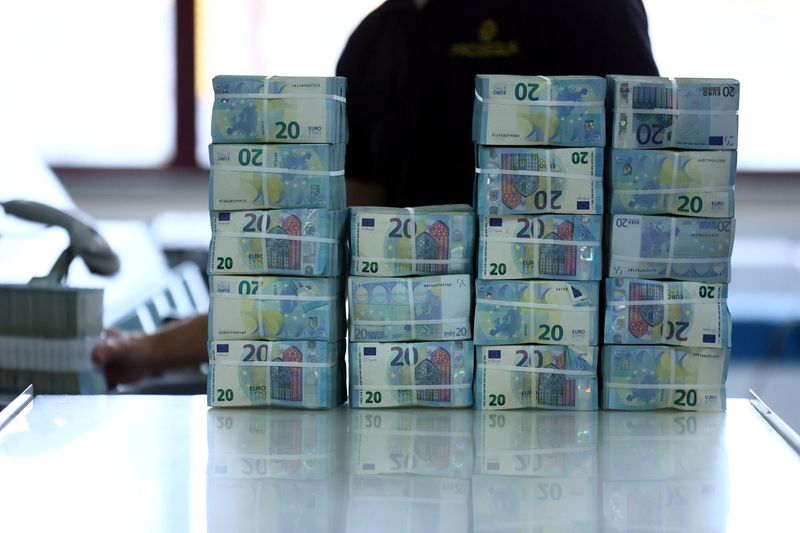By Jamie McGeever
ORLANDO, Florida (Reuters) - The euro was already poised to weaken further before the European Central Bank's latest rate decision, but in signaling Thursday's hike will be its last, the ECB has sealed the deal.
"Lower for longer," if you will.
Hedge funds and speculators are still heavily long the euro, rate differentials will move against it - especially in relation to the yen and dollar - and the euro zone's comparative economic outlook is bleak, especially versus the U.S.
Against that backdrop, could the euro soon be gunning for parity with the dollar? It's 6% away, a notable but not an insurmountable distance to cover.
"A shift lower in EUR rate expectations from here, alongside the potential for U.S. rate cuts to be priced out of the market, makes downside potential for EUR-USD most compelling," HSBC (LON:HSBA) currency analysts wrote on Thursday after the ECB rate hike.
They see the euro weakening to $1.02 by the middle of next year.
From a market positioning standpoint, the scope for more euro downside is compelling too.
The latest Commodity Futures Trading Commission data shows that funds have reduced their net long euro position to a seven-month low of 136,000 contracts, but that is still a substantial $18 billion bet that the euro will appreciate.
It is large by historical standards, and given the euro's dwindling rate appeal relative to its peers, it is likely to be cut further in the coming weeks.
Any euro selling many not be concentrated against the dollar either. Only a few weeks ago the euro was at a 15-year high against the yen - pushing 160.00 yen - bringing its gains against the Japanese currency since March to 15%.
CFTC data show that funds and speculators are holding a chunky net short yen position worth around $8.2 billion. Contrast that with the euro position, and it is not difficult to envisage a potential narrowing of the gulf in the weeks and months ahead.
GROWTH, POLICY PATHS DIVERGE
Especially given the contrasting monetary policy outlooks - just as ECB is signaling the end of its tightening drive, the Bank of Japan is revving up its engines.
Deutsche Bank (ETR:DBKGn) analysts now expect the BOJ to end its "yield curve control" policy in October rather than April 2024, and see Japan's negative interest rate policy ending in January 2024, almost a full year earlier than previously expected.
In short, the euro could fall more against the yen than the dollar, although the U.S.-euro zone divergence will get more attention.
The economic signals from either side of the Atlantic on Thursday were telling - U.S. retail sales smashed expectations and producer price inflation was higher than forecast, while the ECB cut its growth outlook to 0.7% this year and 1.0% next.
No one knows what the future holds - least of all economists - but while the U.S. economy is flirting with a possible soft landing, the euro zone is flirting with a possible recession.
The divergence seems pretty well entrenched. Citi's U.S. economic surprises index has been positive since May and the euro zone index has been in negative territory since May.
Indeed, excluding the pandemic distortions of early 2020, the euro zone surprises index lows from July were on a par with levels last seen in the depths of the Great Financial Crisis.
How much of that is already in the euro's exchange rate remains to be seen, but there is nothing obvious to suggest the dollar's rate and yield advantage will shrink any time soon.
Euro zone interest rate traders reckon the ECB is done raising rates, and are now betting on around 70 bps of rate cuts next year. U.S. rates traders are still on the fence over another rate hike this year, and have gradually been scaling back 2024 rate cut bets recently.

"Today's ECB policy update and stronger U.S. data for Q3 is further encouraging those expectations placing downward pressure on EUR/USD," MUFG's Lee Hardman wrote on Thursday.
(The opinions expressed here are those of the author, a columnist for Reuters)
(By Jamie McGeever; editing by David Evans)